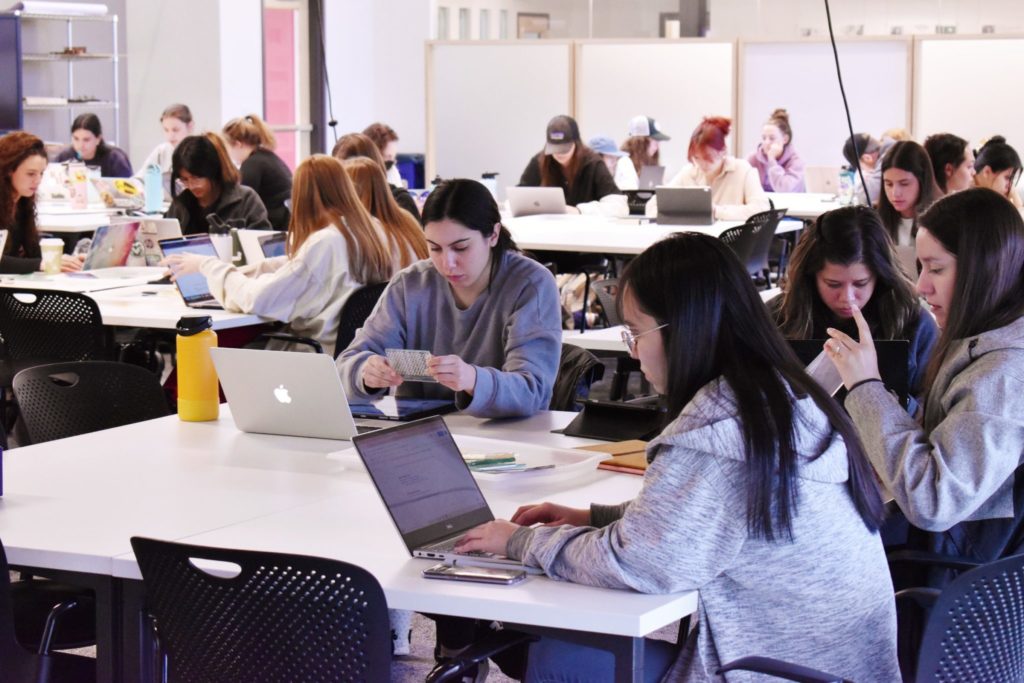
The Interior Architecture and Design Program in the Department of Design and Merchandising at Colorado State University continues to see enrollment increasing at a rapid pace. With the creativity of design, the focus on purpose-driven strategic thinking, supportive instructors, classes in the innovative Nancy Richardson Design Center, and a Counsel for Interior Design Accreditation it’s easy to see why so many students are drawn to the program.
The curriculum is demanding and rigorous, however, and has a checkpoint to ensure students are ready for the demands of a studio-intensive program. For many years, the program has asked students in the pre-interior design major to work through the degree advancement design scenario after their first year of courses to determine their readiness to progress into the interior architecture and design major. The scenario is an assessment of student skills in a range of design-related areas.
Students and parents alike can find the design scenario an intimidating process. Elena Trage is a third-year student in interior architecture and design who now helps mentor first-year students as they prepare for their design scenario. Here are her thoughts and insights on the process. (Spoiler alert: It’s not as scary as you think, and it’s all about ensuring your success!)


What were your initial thoughts when you first heard about design scenario?
When I first heard about design scenario, I was filled with a mixture of excitement and nerves. On the one hand, it presented a great opportunity to showcase my design skills. On the other hand, the uncertainty made me apprehensive about my ability to perform under pressure.
Have your thoughts about design scenario changed over time? If so, how so?
As I progressed through my first year at CSU, my thoughts about design scenario shifted. I realized that it was a chance to take my foundational design knowledge seriously and soak in as much knowledge as I could during my first two semesters. I now see design scenario as a valuable learning opportunity rather than just a test of my skills.
What did you do to prepare before sitting for design scenario?
I dedicated myself to attending all my classes, immersing myself in the theories and methods of evidence-based design, and, I participated in mock scenario and other events hosted by upper-level students to improve my skills and receive feedback. This allowed me to practice and refine my design abilities in a supportive environment where I was getting feedback from students who understood how I was feeling.
How are you involved in design scenario now that you’re an upper-level student?
As a TA in INTD110, I had my first experience helping students prepare for design scenario. Since then, as president of the American Society of Interior Designers at CSU, I have continued to assist underclassmen in navigating scenario. Over the past two years, I have facilitated mock scenario events with other student organizations and hosted ASID’s own Design Scenario Series, creating prompts, providing feedback, and helping students improve their skills. My passion for contributing to other people’s success and growth has led me to take on a mentoring role, where I have helped students build their skills and confidence. Being able to assist those who are struggling or nervous and help them feel their best before scenario is incredibly rewarding, as I understand how daunting the process can be.
What advice do you have for students preparing for design scenario?
My advice is simple. Our program contains a community of students who support one another. Don’t hesitate to seek help from upper-level students or peers, as we have all been through this experience and are eager to share our knowledge and advice. While design scenario may seem intimidating at first, remember to trust that all the work you have put in to learn these last two semesters will pay off. Starting college can be overwhelming, but looking back at how far you’ve come can give you confidence. Remember that this is just another unknown, but you’ve faced unknowns before and succeeded. So don’t let your nerves hold you back, embrace the challenge and take advantage of the support and resources available to you.
If you have additional questions about the design scenario process, you can reference the FAQ page or reach out to designscenario@colostate.edu.
The Department of Design and Merchandising is part of CSU’s College of Health and Human Sciences.